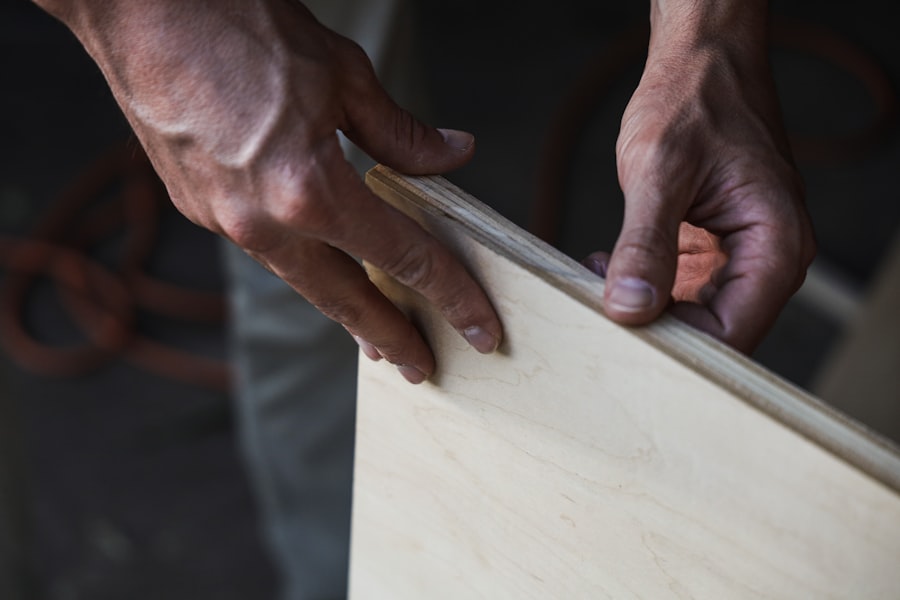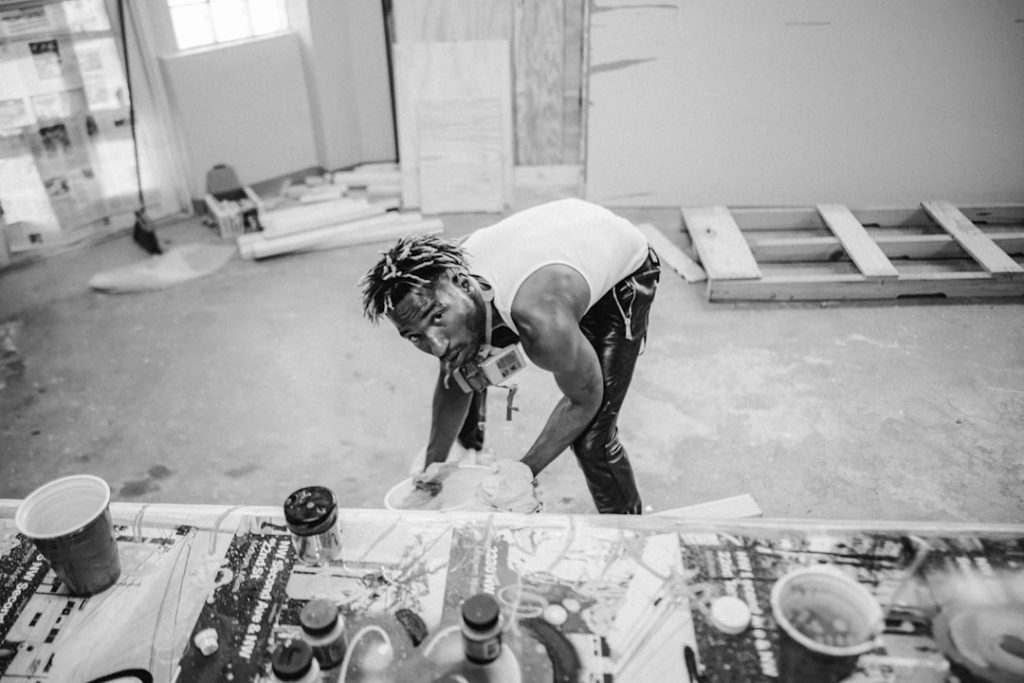Custom cabinets play a pivotal role in both functionality and aesthetics within a home. Unlike stock cabinets, which are mass-produced and often lack the unique characteristics that reflect individual tastes, custom cabinets are tailored to meet specific needs and preferences. This personalization allows homeowners to maximize their space efficiently, ensuring that every inch is utilized effectively.
For instance, in a small kitchen, a custom cabinet builder can create solutions that incorporate pull-out shelves, corner units, and specialized compartments that standard cabinets simply cannot offer. This level of customization not only enhances the usability of the space but also contributes to a more organized and visually appealing environment. Moreover, custom cabinets can significantly elevate the overall value of a home.
When potential buyers walk through a property, high-quality cabinetry often stands out as a hallmark of craftsmanship and attention to detail. Custom cabinets can be designed to match the architectural style of the home, whether it be modern, traditional, or rustic. This cohesive design approach can create a seamless flow throughout the living spaces, making the home more attractive to prospective buyers.
Additionally, the durability and quality of materials used in custom cabinetry often surpass those found in pre-fabricated options, leading to longer-lasting investments that can withstand the test of time.
Key Takeaways
- Custom cabinets enhance home functionality and aesthetics by providing tailored storage solutions.
- Selecting the right builder involves researching experience, reputation, and portfolio.
- Key factors include craftsmanship quality, communication, timeline, and warranty offerings.
- Designing custom cabinets requires collaboration on style, layout, materials, and finishes.
- Proper budgeting, installation, and regular maintenance ensure longevity and satisfaction with custom cabinets.
Finding the Right Custom Cabinet Builder
Finding the right custom cabinet builder is crucial to ensuring that your vision is realized effectively. The first step in this process is conducting thorough research. Start by seeking recommendations from friends, family, or local contractors who have had positive experiences with cabinet builders.
Online platforms such as Houzz or Yelp can also provide valuable insights through customer reviews and project portfolios. It’s essential to look for builders who specialize in custom cabinetry rather than general carpentry, as this specialization often indicates a higher level of expertise and craftsmanship. Once you have compiled a list of potential builders, it’s important to schedule consultations with each one.
During these meetings, you should discuss your project in detail, including your design ideas, budget constraints, and timeline. Pay attention to how each builder communicates; a good cabinet maker should be willing to listen to your needs while also providing professional advice based on their experience. Additionally, ask for references from previous clients and take the time to visit completed projects if possible.
This firsthand observation can give you a clearer picture of the builder’s capabilities and the quality of their work.
Factors to Consider When Choosing a Custom Cabinet Builder

When selecting a custom cabinet builder, several factors should be taken into account to ensure you make an informed decision. One of the most critical aspects is the builder’s experience and reputation within the industry. A well-established cabinet maker with a solid track record is likely to have honed their skills over time and developed a network of reliable suppliers for high-quality materials.
Inquire about how long they have been in business and whether they have experience with projects similar to yours. Another important consideration is the range of services offered by the builder. Some cabinet makers may only provide cabinetry for kitchens or bathrooms, while others might offer comprehensive services that include design consultation, installation, and even aftercare.
It’s beneficial to choose a builder who can guide you through every step of the process, from initial design concepts to final installation. Additionally, consider their ability to work within your budget and timeline constraints; transparency regarding costs and scheduling is essential for a smooth project experience.
The Process of Designing Custom Cabinets
| Step | Description | Estimated Time | Key Metrics | Tools/Materials |
|---|---|---|---|---|
| 1. Initial Consultation | Discuss client needs, style preferences, and budget. | 1-2 hours | Number of client meetings, budget range | Questionnaires, design software |
| 2. Measurement & Site Survey | Take precise measurements of the installation area. | 1-3 hours | Accuracy of measurements (± mm), number of measurement points | Measuring tape, laser measure |
| 3. Design & Drafting | Create detailed cabinet designs and 3D models. | 1-5 days | Number of design iterations, design approval rate | CAD software, 3D modeling tools |
| 4. Material Selection | Choose wood types, finishes, hardware, and accessories. | 1-2 days | Material cost, durability rating, client preferences | Sample boards, catalogs |
| 5. Fabrication | Cutting, assembling, and finishing cabinet components. | 1-3 weeks | Production time, defect rate, material waste percentage | Woodworking tools, CNC machines |
| 6. Quality Control | Inspect cabinets for defects and finish quality. | 1-2 days | Number of defects found, rework rate | Inspection checklists, measuring tools |
| 7. Delivery & Installation | Transport and install cabinets at client site. | 1-3 days | Installation time, client satisfaction score | Transport vehicles, installation tools |
| 8. Final Walkthrough & Feedback | Review completed work with client and gather feedback. | 1 hour | Client approval rate, feedback ratings | Feedback forms, communication tools |
The design process for custom cabinets is an exciting yet intricate journey that requires collaboration between the homeowner and the cabinet builder. Initially, it begins with an in-depth consultation where ideas are exchanged. Homeowners should come prepared with inspiration—this could include images from magazines, Pinterest boards, or even sketches that illustrate their vision.
The builder will then assess the space available and discuss practical considerations such as storage needs, functionality, and style preferences. Once initial ideas are established, the builder typically creates detailed drawings or 3D renderings of the proposed cabinets. This visual representation allows homeowners to see how their ideas will translate into reality and provides an opportunity for adjustments before construction begins.
During this phase, discussions about specific features such as drawer configurations, door styles, and hardware choices take place. The goal is to ensure that every detail aligns with the homeowner’s vision while also adhering to practical considerations like ergonomics and accessibility.
Materials and Finishes for Custom Cabinets
The choice of materials and finishes is one of the most significant aspects of custom cabinet design, as it directly impacts both aesthetics and durability. Common materials used in custom cabinetry include hardwoods like oak, maple, cherry, and walnut, each offering unique grain patterns and colors that can enhance the overall look of a space. Plywood is often used for cabinet boxes due to its strength and resistance to warping compared to particleboard or MDF (medium-density fiberboard).
The selection of materials should be guided by both personal preference and functional requirements; for example, kitchens may benefit from moisture-resistant finishes due to exposure to humidity. Finishes also play a crucial role in defining the character of custom cabinets. Homeowners can choose from various options such as stains, paints, or natural finishes that highlight the wood’s grain.
Stains can add depth and richness while allowing the natural beauty of the wood to shine through; conversely, painted finishes offer a more uniform look that can be tailored to match any color scheme. Additionally, protective coatings such as polyurethane or lacquer can enhance durability and ease of maintenance. The right combination of materials and finishes not only contributes to the visual appeal but also ensures longevity in everyday use.
Budgeting for Custom Cabinets

Budgeting for custom cabinets requires careful planning and consideration of various factors that can influence overall costs. Unlike stock cabinetry, which has fixed prices based on standard sizes and styles, custom cabinets are priced based on materials used, complexity of design, labor involved, and any additional features requested by the homeowner. It’s essential to establish a realistic budget early in the process that accounts for all these variables while leaving room for unexpected expenses.
To create an effective budget, homeowners should begin by researching average costs in their area for custom cabinetry projects similar to theirs. This research can provide a baseline for what to expect when discussing pricing with potential builders. Additionally, it’s wise to prioritize features based on necessity versus luxury; understanding which elements are essential for functionality versus those that are purely aesthetic can help streamline costs without sacrificing quality.
Open communication with your chosen cabinet builder about budget constraints will also allow them to suggest alternatives or modifications that can achieve desired results within financial limits.
The Installation Process for Custom Cabinets
The installation process for custom cabinets is a critical phase that requires precision and expertise to ensure that everything fits perfectly within the designated space. Once the cabinets are built according to specifications, scheduling an installation date is essential. On installation day, it’s common for professional installers to arrive with all necessary tools and equipment needed for assembly and placement.
The first step typically involves preparing the area where the cabinets will be installed; this may include removing old cabinetry or making adjustments to walls or flooring if necessary. Once everything is ready, installers will carefully position each cabinet according to the pre-determined layout. It’s crucial that cabinets are level and securely anchored to walls to prevent any future issues such as sagging or misalignment.
After installation is complete, final touches such as attaching hardware or making minor adjustments are performed before cleaning up the workspace.
Maintaining and Caring for Custom Cabinets
Maintaining custom cabinets is essential for preserving their beauty and functionality over time. Regular cleaning is one of the simplest yet most effective ways to care for cabinetry; using a soft cloth with mild soap and water can help remove dust and grime without damaging finishes. It’s advisable to avoid harsh chemicals or abrasive cleaners that could scratch surfaces or strip protective coatings.
In addition to routine cleaning, homeowners should periodically inspect their cabinets for signs of wear or damage. This includes checking hinges and drawer slides for proper function as well as looking for any signs of moisture damage or warping—especially in areas like kitchens or bathrooms where humidity levels fluctuate significantly. Addressing minor issues promptly can prevent them from escalating into more significant problems down the line.
For those who wish to maintain a fresh appearance over time, periodic refinishing or re-staining may be considered based on wear patterns observed during inspections. By understanding these various aspects surrounding custom cabinets—from their importance in home design to maintenance practices—homeowners can make informed decisions that enhance both their living spaces and overall quality of life.



